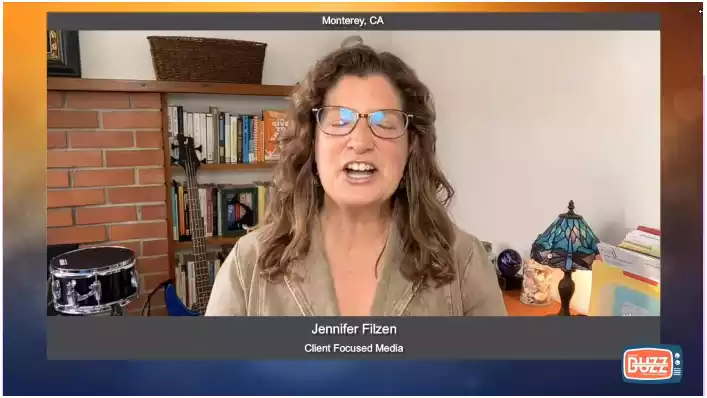Cross-Sector Collaboration in Prior Authorization: The Key to Unlocking Healthcare Efficiency
Delve into the dynamic world of cross-sector collaboration in prior authorization. Uncover how different industries unite for smoother processes and better outcomes. Join the journey toward efficiency!

Understanding what getting prior authorization means is essential for navigating healthcare procedures effectively. At Portiva, we provide clarity on this process. Prior authorization involves obtaining approval from your insurance company before receiving certain medical treatments, procedures, or medications. Our expert team guides you through the steps involved, ensuring you understand the requirements and implications of prior authorization.
Let’s start!
Table of Contents
The Importance of Cross-Sector Collaboration in Prior Authorization
 Navigate the maze-like passageways of the healthcare system, especially when one comes across the formidable gatekeeper known as prior authorization (PA). Prior authorization is a tool used by insurers to decide whether to pay for an uninitiated patient’s prescribed medical service or treatment.
Navigate the maze-like passageways of the healthcare system, especially when one comes across the formidable gatekeeper known as prior authorization (PA). Prior authorization is a tool used by insurers to decide whether to pay for an uninitiated patient’s prescribed medical service or treatment.
In recent years, stakeholders have brought the prior authorization process to light, highlighting its inefficiencies, needless red tape, and significant delays for both patients and providers.
The good news? A solution hidden within these challenges involves the collaboration of different sectors within the healthcare industry. Let’s examine what prior permission entails and why cross-sector collaboration could be the key to unlocking a more effective healthcare system.
The Problem with the Current Prior Authorization System
The original purpose of prior permission was to protect against superfluous or needless medical procedures and guarantee efficient use of healthcare resources. Nevertheless, putting PA mechanisms into place has frequently resulted in unintentional bottlenecks and delayed delivery of care.
Here’s why:
- Administrative Burden: Healthcare providers often spend enormous amount of time navigating the complex web of PA requirements set by various insurers. Administrative work takes up this time that could be spent caring for patients.
- Patient Frustration: Delays in obtaining prior authorization can lead to dissatisfaction and even result in patients forgoing recommended care due to the prolonged process.
- Inconsistent rules: The application of prior authorization laws might be uneven since insurers differ from one another and even within the policies of the same insurer.
The Case for Cross-Sector Collaboration
Although prior permission problems appear intractable, there’s a strong likelihood that cross-sector collaboration will result in solutions.
Consider the benefits:
- Enhanced Transparency: Collaboration can foster the development of standard, transparent processes and criteria for prior authorizations, reducing confusion and variability.
- Streamlined Procedures: Stakeholders can make the permission process more effective for all parties by collaborating to identify unnecessary administrative procedures and streamline it.
- Improved Communication: Coordinating and communicating across several sectors improves information flow, makes sure everyone is aware of the situation, and lowers the possibility of mistakes or mishaps.
Players in the Industry Ready for Cooperation
The call for collaboration is not merely ideological; it points to concrete and practical steps that can be taken to revamp the prior authorization system. Several industry players are well-positioned to initiate and benefit from such collaborative efforts:
- Providers and Insurers: These key players are vested in improving the prior authorization process, directly impacting their operating costs and patient relationships.
- Technological Innovators: By leveraging developments in Health Information Technology (HIT), innovators can develop tools and platforms that streamline and automate interactions between insurers and providers.
- Regulators and Policymakers: Regulators can be key players in mandating or encouraging cooperative approaches to prior permission by establishing the ground rules.
Practical Strategies for Prior Authorization Collaboration

The question is not if collaboration is necessary, but rather how to do it effectively.
The following tactics can open the door to prior authorization procedures that are more effective and patient-centered:
- Data Sharing: Encourage sharing relevant patient and process data between providers and insurers within the confines of privacy regulations and best practices.
- Common Platforms: Invest in or develop shared technology platforms that allow for the seamless exchange of information and automation of prior authorization requests and decision-making.
- Education and Engagement: Promote joint educational initiatives that clarify the authorization process and criteria and the importance of timely and appropriate care.
The Path Forward
Cross-sector collaboration in prior authorization is not a panacea but a rational, forward-looking strategy that could alleviate many of the pain points associated with the current system. Making these collaborations a reality will require vision, commitment, and sustained effort from all involved parties.
I'm very thankful for Portiva who I know is looking after my practice while I'm gone the virtual assistants can manage prescription refills, documents they can triage patients and just kind of answer administrative questions and they can handle a lot on their own. But also, they're very good about contacting me if there's any emergency or anything I need to attend to. So I'm very thankful for Portiva they can help almost any provider almost anywhere and it really allows for some good work-life balance as I'm getting to experience right now at my family farm so I'm very thankful for Portiva and I'm very happy to use their services"

Board Certified Family Medicine Physician

Portiva's Virtual Medical Assistant - I have all the support I need. There's somebody checking my email, any patient messages. Patients are still able to schedule and handle any scheduling issues and any kind of billing that needs to still go through. Portiva hands handles it all for me. I have support i have somebody that I can access 24/7 pretty much. It's all very seamless. If somebody has an emergency or needs a medication called in. I know that the va's at portiva will handle that for me.

Board Certified Family Medicine Physician

Case Studies in Successful Collaboration
 To bring the concept of prior authorization collaboration to life, we can look to case studies of real-world successes where stakeholders have worked together to streamline and improve the process. These stories can inspire and provide practical insights for others to follow suit. Some notable examples include:
To bring the concept of prior authorization collaboration to life, we can look to case studies of real-world successes where stakeholders have worked together to streamline and improve the process. These stories can inspire and provide practical insights for others to follow suit. Some notable examples include:
Massachusetts Health Quality Partners: This organization collaborates with providers, insurers, and patients to develop prior authorization criteria for standard procedures. This method resulted in a 36% reduction in the average time required for prior permission.
The Advanced Medical Technology Association (AdvaMed): In partnership with America’s Health Insurance Plans (AHIP) collaborated to create an electronic prior permission form that is universally usable by all stakeholders. This has greatly shortened processing times and removed the need for providers to traverse between forms.
Overcoming Barriers to Collaboration
While the benefits of collaboration are clear, there are often practical and cultural barriers that must be overcome. This section will examine these issues and offer solutions to make sure the cooperative spirit may thrive.
In doing so, we can pave the way for a more cohesive and efficient healthcare system that prioritizes the needs of patients above all else. By embracing collaboration in prior authorization, we can unlock the full potential of our healthcare resources and promote better outcomes for all involved. So, let’s work together towards a brighter future for healthcare!
These collaborations have shown promising results in reducing administrative burden, improving patient satisfaction, and ensuring consistent prior authorization processes. We can pave the way for a more efficient and patient-centric healthcare system by highlighting successful collaborations and addressing potential barriers.
Celebrating Success and Looking to the Future
By celebrating the successes of early adopters, we can drive momentum and encourage others to join the collaborative movement. Additionally, planning for the future with a patient-centered, more effective pre authorization method can pave the way for continued innovation and development.
As we look to the future of healthcare, one thing is sure: the status is not sustainable. We have a chance to improve healthcare delivery and patient experiences by fostering communication amongst the different stakeholders in the sector and fixing the prior authorization procedure. It’s a challenging goal that is readily accomplished with cooperation.
To learn more about healthcare access that can enhance your medical practice. Discover more about Portiva and unlock a world of possibilities by visiting our homepage today!
- Operational excellence in healthcare prior authorization
- Financial landscape of prior authorization in healthcare
- Patient’s complete guide to navigate prior authorization
- Easing stress with preauthorization solutions
- Transitioning prior authorization tasks
- Precertification in private practices
- Healthcare prior authorization
- Optimal results in prior authorization
- Patient satisfaction and prior authorization
- Precertification efficiency with virtual medical assistants
- Elevating patient care through outsourcing preauthorization
- Handling common hurdles in precertification
- Maximizing success in prior authorization
- The future of electronic prior authorization
- Prior authorization compliance in healthcare
- Measuring efficiency in prior authorization
- Health insurance’s prior authorization process
- Quality assurance in prior authorization
- Provider training in prior authorization

